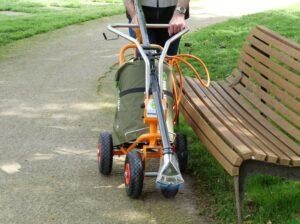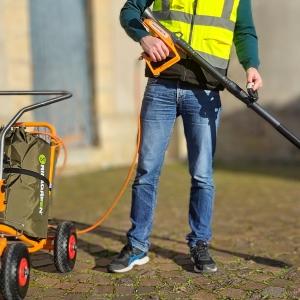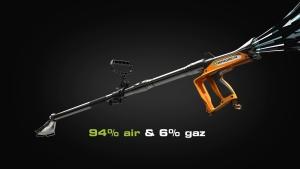
In the ongoing search for sustainable energy alternatives, biogas and biopropane are emerging as key pillars in the transition to a greener economy. Ripagreen®, a leading innovator in thermal weed […]

Local authorities, green space managers and contractors are all seeing the same thing: the question is no longer “do we need to weed?” but “how can we do it without harming the environment?”
For many years, chemical weeding (herbicides based on glyphosate or other molecules) was the main solution. Today, regulations are becoming stricter and citizens’ expectations are changing. Thermal weeding solutions, such as the Ripagreen hot air technology, offer a credible alternative.
Let’s compare their environmental impact.

Herbicides settle on surfaces, seep into the soil and can be carried by rain into ditches, rivers or groundwater. Even when applied “by the book”, they leave residues that can sometimes be detected long afterwards.
Thermal weeding with hot air works differently: not a single drop of product, only a thermal shock that bursts the plant cells and stops their growth. The heat acts only where you pass, without leaving any trace or substance in the soil or water.
In practice, the risk of diffuse pollution is greatly reduced, which is a key point for municipalities concerned about the quality of their water resources.
A herbicide does not distinguish between a “weed” and a plant that may actually be beneficial for the soil or biodiversity. It can also affect certain insects and micro-organisms. Repeated over time, this contributes to impoverishing soil life and surrounding ecosystems.
Thermal weeding, on the other hand, works in a much more localised way: only the plants exposed to the hot air flow are affected. When used as part of a differentiated management approach (treating only sensitive areas such as pavements, bases of walls, around buildings, cemeteries, etc.), it allows the creation of refuge areas for flora and fauna, while still maintaining a neat appearance in public spaces.
One might think that “burning gas” is automatically worse for the climate. But you have to look at the full life cycle:
• manufacture and formulation of herbicides,
• packaging, transport and storage,
• management of empty containers and hazardous waste.
Ripagreen thermal weeding uses gas as an energy source, but most of the work is done by heated ambient air: around 94% air for 6% gas. Consumption is optimised and there are no chemical product cans or packaging to manage.
Depending on the context, the overall carbon footprint can be comparable or even better, while eliminating the impacts linked to synthetic chemistry and residues in the environment.
What’s more, the Ripagreen thermal weeding solution can also run on biogas, which further reduces its environmental impact.
The risks associated with exposure to herbicides are increasingly being questioned: for operators, residents, children, animals… Hence the tightening of regulations and the growing number of areas where chemical products are banned.
Thermal weeding, by contrast, generates no spray mist and no toxic residue. Operators do not handle products classified as hazardous, and residents are much more accepting of this method. Combined with clear communication (“Pesticide-free town”, “Maintenance without herbicides”), it becomes a real image booster for the local authority.
Chemical weeding:
• Fast application at the beginning
• Residues in soil and water
• Impact on biodiversity
• Health risks
• Increasingly strict regulation
Ripagreen hot air thermal weeding:
• Zero pesticides
• No pollution of soil or groundwater
• Limited and controllable impact on biodiversity
• Long-lasting results
• Sustainable solution compatible with “zero pesticide” policies
For municipalities and site managers, it is a concrete way to combine maintenance, safety and respect for the environment.
You may also be interested in

In the ongoing search for sustainable energy alternatives, biogas and biopropane are emerging as key pillars in the transition to a greener economy. Ripagreen®, a leading innovator in thermal weed […]

In order to be effective, weeding must be carried out during specific periods of the year. Discover our tips for successful weeding. BEST TIME TO WEED: WHEN? To be effective, […]

Since the increase in restrictions over chemical weeds control in many countries, thermal weeding has become an alternative to chemical weeding. But what about the consumption of thermal weeding equipment? Is […]